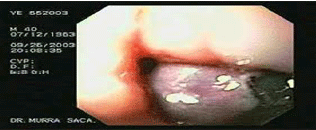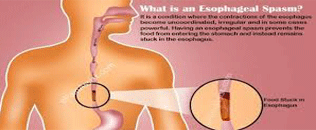Stricture dilation is a procedure that allows your doctor to dilate, or stretch, a narrowed area of your
esophagus [swallowing tube]. Doctors can use various techniques for this procedure. Your doctor
might perform the procedure as part of a sedated endoscopy. Alternatively, your doctor might apply
a local anesthetic spray to the back of your throat and then pass a weighted dilator through your
mouth and into your esophagus.
The most common cause of narrowing of the esophagus, or stricture, is scarring of the esophagus
from reflux of stomach acid occurring in patients with heartburn. Patients with a narrowed portion
of the esophagus often have trouble swallowing; food feels like it is “stuck” in the chest region,
causing discomfort or pain. Less common causes of esophageal narrowing are webs or rings (which
are thin layers of excess tissue), cancer of the esophagus, scarring after radiation treatment or a
disorder of the way the esophagus moves.
What is variceal banding?
Variceal banding, also known as varices banding, is a common technique that is used to stop
variceal bleeding. Variceal bleeding occurs in a patient’s digestive tract originating from
varices, or enlarged veins. Banding is a proven method to stop the bleeding, which can
prevent further complications and serious health risks.
Why is variceal banding performed?
Variceal banding is performed on patients experiencing variceal bleeding, which is the
leaking of blood from enlarged veins (varices) in the digestive tract. Often, patients suffering
from cirrhosis will develop this condition. Unfortunately, once variceal bleeding occurs in a
patient, there is a high likelihood that it will occur again. The chances for subsequent
bleeding are highest after the initial incident, with chances diminishing over the course of
several weeks. Untreated, this types of bleeding can result in death, so it is important to have
it treated as quickly as possible.
Common symptoms of variceal bleeding include:
- Vomiting or spitting up blood
- Low blood pressure
- Dizziness/lightheadedness
- Rapid heart rate
- Black, tarry, or bloody stool
If you are suffering from any of the above symptoms, it is critical to seek medical help
immediately.
Sclerotherapy effectively treats varicose and spider veins. It's often considered the treatment
of choice for small varicose veins.
Sclerotherapy involves injecting a solution directly into the vein. The sclerotherapy solution
causes the vein to scar, forcing blood to reroute through healthier veins. The collapsed vein is
reabsorbed into local tissue and eventually fades.
After sclerotherapy, treated veins tend to fade within a few weeks, although occasionally it
may take a month or more to see the full results. In some instances, several sclerotherapy
treatments may be needed.



